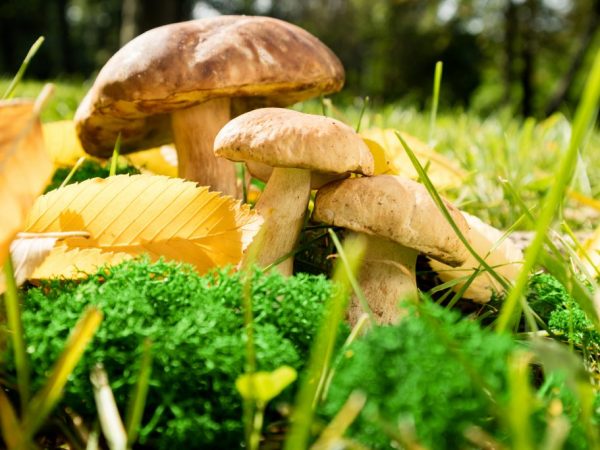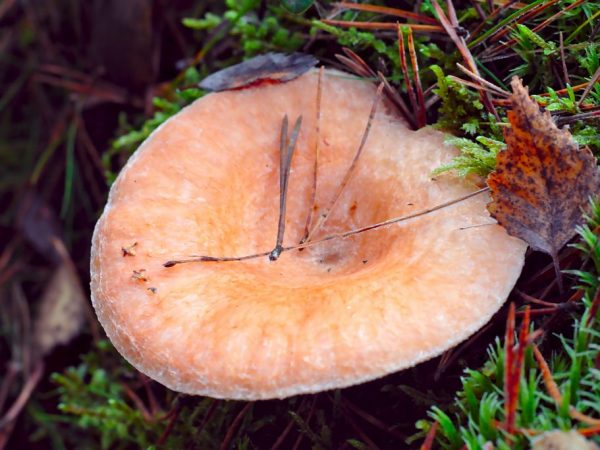Characteristics of Siberian mushrooms
In the vastness of the Siberian forests, there is always a mass of mushrooms, the harvesting season of which begins in the spring and autumn. Mushrooms are actively used for preserving and preparing all kinds of delicious dishes, including side dishes. They are useful with a high content of amino acids, and also delight with their excellent taste. Nevertheless, Siberian mushrooms are found both edible and poisonous. False mushrooms are also presented, which only an experienced mushroom picker can distinguish from edible ones.

Characteristics of Siberian mushrooms
Edible varieties
Edible mushrooms of Siberia are evenly distributed in the eastern and western parts. But their collection and preparation requires special skills. After all, representatives of edible and tasty species are easily confused with their poisonous counterparts.
Porcini
The most popular representative that impresses with its taste and appearance. White boletus is difficult to confuse with any other species. They are distinguished by a spongy cap of a milky or creamy color, depending on maturity, as well as a slightly convex stem, which also has a characteristic white color on the cut. This handsome man grows in coniferous, deciduous and mixed.
Porcini mushrooms have a special dislike for moisture, most often it is found on moss surfaces. It is harvested in the summer, on the territory of meadows and plantings. And also in the autumn - deep in the woods.
Boletus
Young representatives of the species have a slightly pinkish cap, which becomes creamy with age. The leg of the boletus is thick and white, slightly cylindrical in shape. So, if you cut it, it will quickly turn blue. Aspen mushrooms grow in forests. They can be found near aspens (as the name implies), as well as poplar and birch. The soil near oak and willow is also becoming a favorite spot for boletus boletus. This fungus is a mycorrhiza-forming fungus and without this very interesting and complex "construction" between it and certain types of trees, it simply will not survive.
Aspen mushrooms carefully choose the quality of the soil, they create their mycelium in an area with a high content of peat and sand. It is best to pick such mushrooms in July. But, the representative is also found in the autumn, before the onset of the first frost.
Boletus
It features a dark cap, which remains white at the break. Most often, the mushroom is harvested at an early age, since it loses its attractive appearance with development. Obobok always chooses a place well lit by the sun for growth, but always wet.
Boletus mushrooms grow in deciduous forests. Mushrooms can be found in a clearing or on the edges of forests.
Fans of such a hunt usually go for boletus in the first half of summer.
Closer to autumn, mushrooms of this species grow again.
By the way. Boletus and boletus boletus are united by the common name "obabok", which is at the same time the name of the genus to which they belong - the genus Lektsinum (Obabok).
Butterlets
Distributed in the forests of the taiga in Siberia. The species got its name from the soft and cool bonnet. As soon as you take it in your hands, it seems that it is not a mushroom, but a piece of oil from their refrigerator. The cap itself is yellow-brown in color, its skin is slimy, the base of a young mushroom is white or yellowish.
Siberian boletus grows in coniferous and deciduous forests. They are harvested between August and the end of September;
Ryzhik

Gingerbreads grow in coniferous forests
They refer it to category 1. It is distinguished by a reddish-red cap with a characteristic concavity and a short white stem. It is also distinguished by a special aroma and milky juice, colored very brightly in shades of red. Grows in coniferous forests. You need to look for it near the spruce and pine.
It should be added that most often the mushrooms are located on the north side of the tree. The first mushrooms can be found in July, the last - in September and October;
Volzhanka or volzhanka
The fungus is found in birch, mixed groves in sufficiently illuminated areas. It got its name for a wavy pink-orange hat with pubescent and curved edges. The species is characterized by a short stalk and fragile flesh. It is harvested from late July to mid-September.
Russula
On the territory of Siberia, there is a huge variety of russula, which differ in the color of the cap. But, what unites them is just a specific film on the surface. Proceeding from the name, you should not try the mushroom, because, due to inexperience, you can "get" on a pale toadstool. Russula grow in regular and mixed forests. They are harvested in early July until the end of October.
Lactose
Popular due to its wavy hat. It is appreciated not only for its appearance, but also for its taste and aroma. The most popular representative is common in coniferous and mixed forests. You can search for them from July to October.
Chanterelle
The hat is yellow, elongated in a specific irregular shape or even depressed, with slightly rounded edges.
Irina Selyutina (Biologist):
The hymenophore of chanterelles is very different in appearance from the spore-bearing layer of other lamellar fungi. They are represented by rather thick folds, on the surface of which spores form. In the pulp and spores of the chanterelle there is a natural antihelmintic of quinomannosis. He has a negative effect on all representatives of arthropods who want to settle in his body. It also affects helminths. Due to the fact that there are practically no worms in the pulp, chanterelles are classified as kosher mushrooms.
They can be found in the midst of summer, when other mushrooms are scarcely found. Dominated in mixed forests.
Honey mushroom
Has a yellow, slightly brown cap with a white stripe. They grow in whole families of several pieces. They are found mainly on 200 species of trees. They bear fruit in 2-3 waves per season. It is best to look for them at the end of August-September.
Inedible mushrooms
The following fall into the category of poisonous (inedible) mushrooms of Siberia:
- Lines: conditionally edible, which means that mushrooms are acceptable for food, which contain poisonous substances in apothecia (fruit bodies) and require careful preliminary processing. They meet in early spring
- Amanita: has a noticeable hat with white flakes (the remains of the bedspread). It attracts with its appearance. It grows near spruce and birch on acidic soils from August to October. When the white flakes disappear after rain, it poses a danger to inexperienced mushroom pickers. they may mistake such venomous specimens for part of the edible species.
- False mushrooms: differ from the edible species in a pronounced "skirt" and a characteristic smell. They can be found in summer and autumn.
- The pig is fat: found in coniferous and deciduous forests, looks like a chanterelle. Due to the peculiarity of its appearance, it is often called "felt pig". The body contains toxins that are not destroyed by heat treatment.
- Agaric: parasitizes many types of conifers.An important medicinal mushroom.
Irina Selyutina (Biologist):
Agaric, or larch sponge or larch sponge, has a number of synonymous names, but all contain the word "larch". The scientific name is Fomitopsis officinalis. This clearly shows that it is a parasite exclusively of conifers and, based on the name, most often of larch trees (deciduous conifers). This species does not occur on birches, as well as on other deciduous tree species. Another species is confined to them - the real tinder fungus (Fomes fomentarius). Unfortunately, it is very often confused with agaric. Most likely this is due to the similarity of the sound of the names "deciduous" and "larch". Such mistakes lead to incidents when a real tinder is shown in the photo in the article about agaric. Therefore, if there are no larch trees in your area, agaric (respectively, its medicinal derivatives) can be purchased only at a pharmacy.
Therefore, you need to be very careful when collecting. It is better for novice mushroom pickers not to go for mushrooms alone, but to try to find themselves an experienced companion in this matter.
Collection recommendations
When picking mushrooms, you should follow simple rules:
- Do not touch old and large mushrooms - they are important spore carriers. If you accidentally knock it down, hang the mushroom or its cap on a tree branch (this way spores will spread better with air currents).
- Fungi with cracks on all (or parts of) the surface accumulate toxins, so they should be neglected.
- Even young edible specimens should not be collected near roads and highways, since they, like a sponge, can absorb all harmful substances, including salts of heavy metals.
Cooking features
To make an edible mushroom really tasty, it is worth using it for its intended purpose, which is already "predetermined" for it by the centuries-old practice of our ancestors:
- For cooking, it is preferable to choose chanterelles, volnushki and flywheels.
- For salting, mushrooms, honey mushrooms and boletus are suitable. It is best to dry porcini mushrooms and honey agarics.
- But if you want to fry mushrooms, then boletus, mushrooms, mushrooms and mushrooms are best suited. With this method of preparation, they are the most delicious and give a rich aroma.




